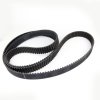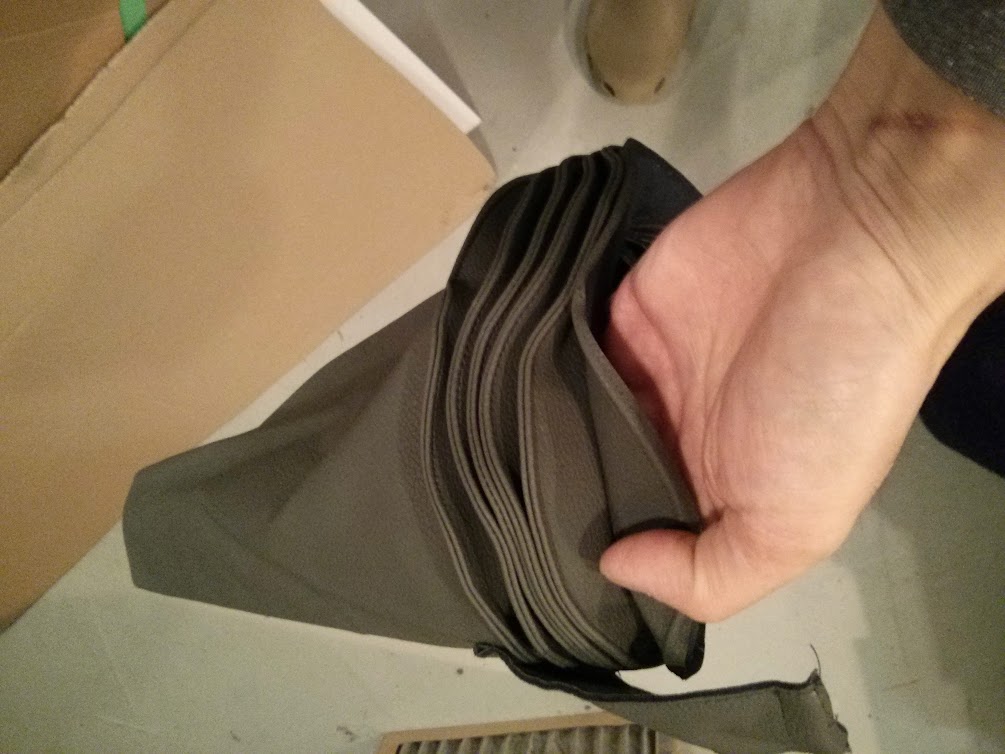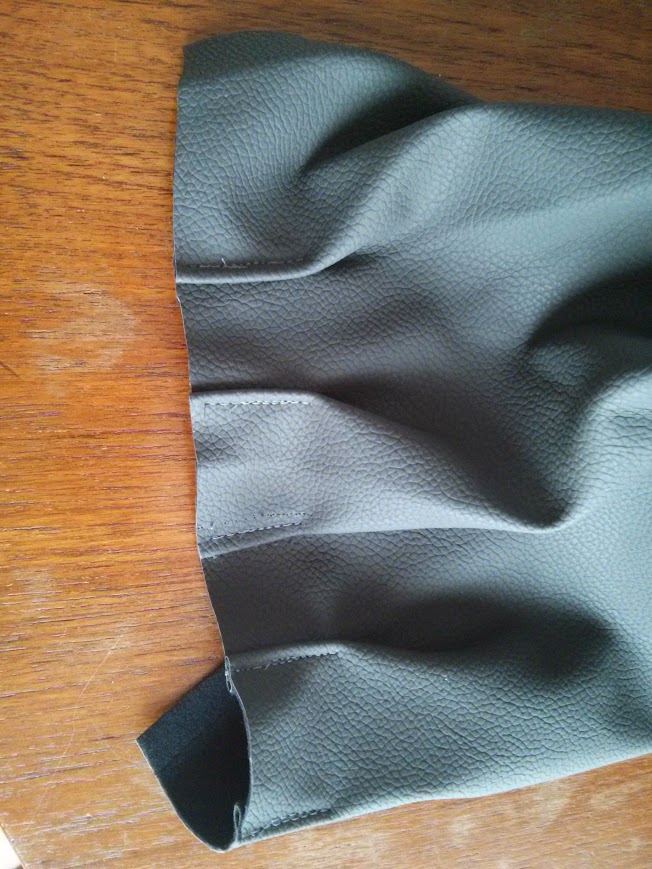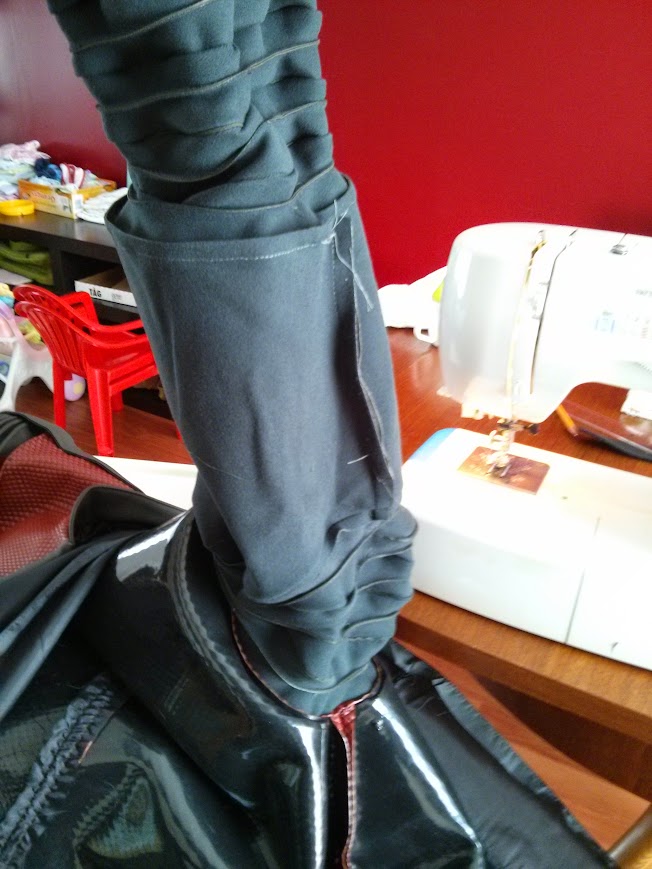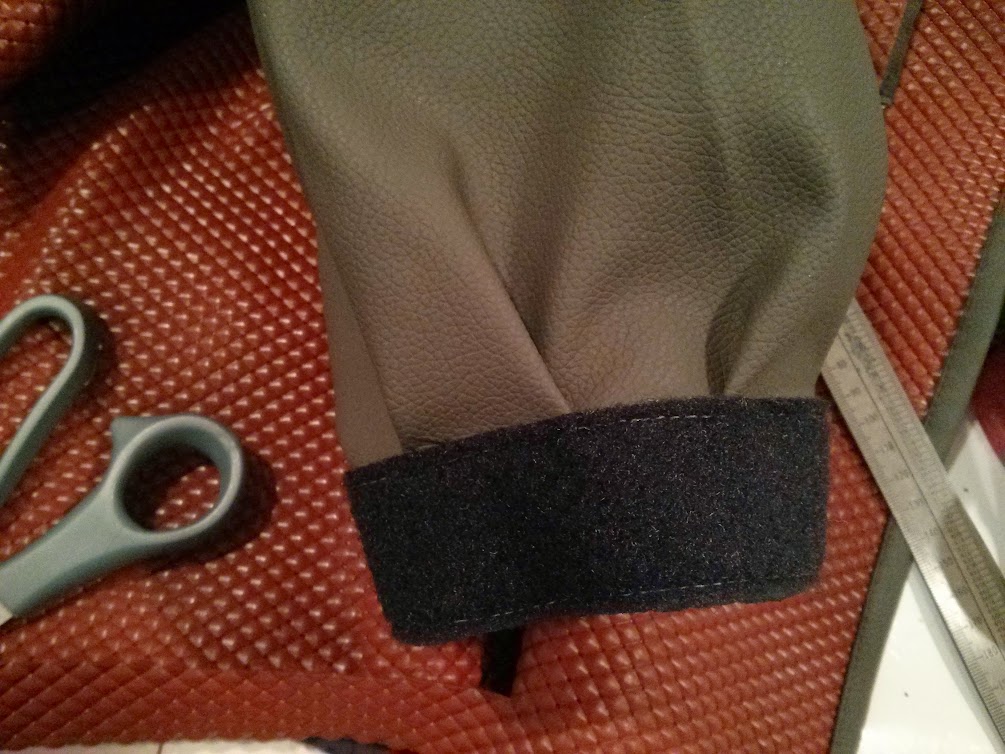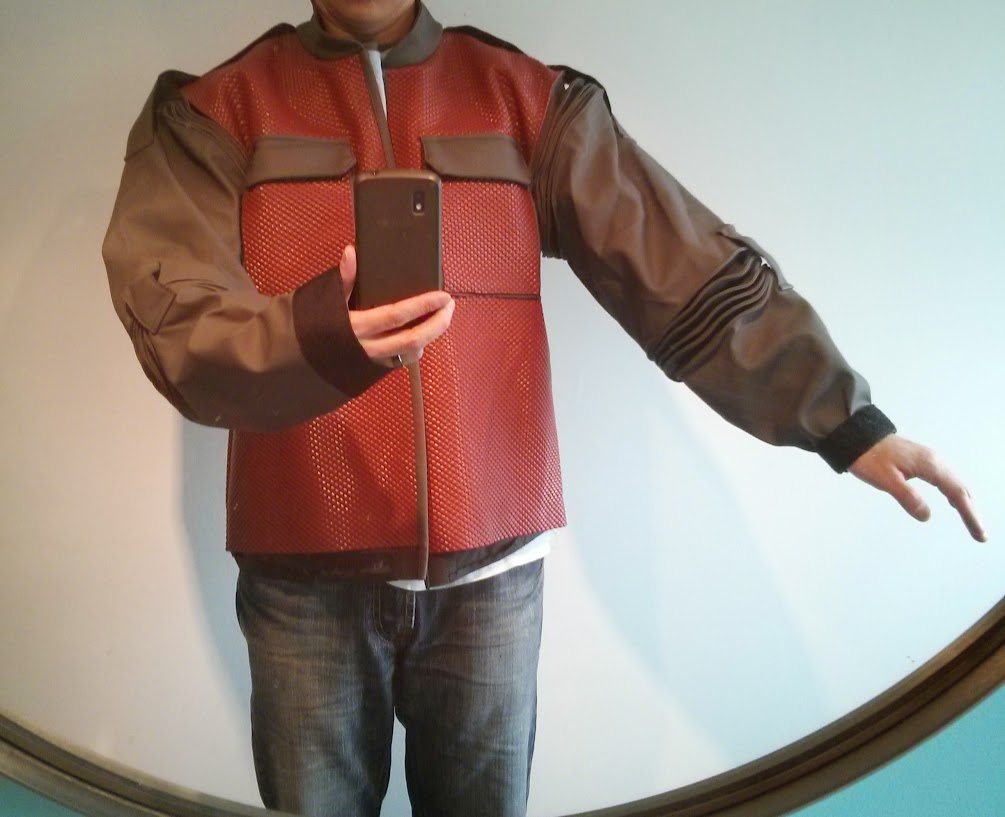The flashing LED is the problem. If you want an LED to flash in sync with the audio, you need to use a standard LED and probably a proper current-limiting resistor (depending on the LED, the audio being used, and the output capability of the amplifier -- this amp might not be able to push enough current to hurt the LED even without a resistor).
Scotophor is correct. A flashing LED requires a steady DC current to activate the flashing circuit built into the LED itself.
A normal LED will ramp up to full brightness and back down to off according to which half of the AC signal going to the speaker corresponds to the correct polarity of the LED.
Sound itself is a sine wave, meaning an audio signal is AC, meaning half the time the voltage going to the speaker is going positive from a given reference point, and half the time it is going negative.
During only one half of this full AC cycle, the polarity going to the speaker (and connected LED) will match what the LED needs to light up.
But since a sine wave ramps up to a peak, and then back down, for most of that cycle, the LED will not be fully on because the power will be much lower than the LED needs for full brightness.
Hence my experience leading to my super-bright LED in the waistband being barely noticeable in the daytime. Also, don't forget, the LED is sharing its power with the speaker, so it will be receiving less power than without the speaker attached. jhk1976 has the right idea about dedicating one channel of his stereo sound module just to the LED. Not all sound modules out there are stereo though.
And just a quick FYI for those who are interested, Digital Audio just replicates the sounds natural AC waveform by rapidly switching from full-on to full-off.
By varying both the duration of the on/off times and how often it does it per second (the frequency) you can vary both pitch and volume.
It is a similar principle as to how DC car inverters work. their circuits take the 12DC car power, filter it, amplify it, and then switch it on and off so fast as to give the appearance of 120V AC.
Just my two cents, I hope my errors here have been kept to a minimum.
Your Friend in Time,
--ElectroDFW--
aka David M.
aka Marty McFly Dallas Cosplay
http://www.facebook.com/mcflydallas





